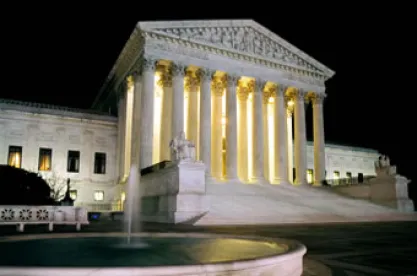Many in the tech industry breathed a sigh of relief April 5 when the U.S. Supreme Court, by a 6-2 decision, ruled that Google had not violated Oracle’s copyright by using components of Oracle’s Java programming language in Google’s Android operating system employed in most of its smartphones.
However, the Supreme Court sidestepped the fundamental IP issue—whether or not Oracle’s software code at the heart of the case is copyrightable—and assumed for the sake of argument it was in applying the fair use doctrine in Google’s favor.
High Stakes in API Showdown
The dispute centered around what some have described as the tech industry’s long-standing practice of sharing software interfaces when creating new applications. Interfaces allow programs and devices to communicate with one another. However, Oracle’s Java application program interfaces (APIs) interacted with Oracle’s Java Platform. Oracle profited by encouraging developers to create programs written in Java and then charging manufacturers a fee to embed in their devices the Java software platform needed to run those programs.
Google’s business model was entirely different. Google offered Android for free to device manufacturers and used Android to collect data and gain revenues through ad sales. There currently are more than 2.5 billion active Android devices around the world, including smartphones, tablets, and other Internet-connected technology. Google’s Android has grown to dominate the global market share. It is nearly impossible to overestimate the importance of the Android operating system in the global economy, and to the daily lives of many people.
Google eliminated the reason manufacturers were willing to pay to install the Java Platform, causing the licensing revenues of Oracle’s Java platform to plummet.
Google copied lines of “declaring code” that are part of Oracle’s Java APIs (think the user facing code of an API) in developing the Android operating system. Google claimed this is fair use and common practice in the software development world. In Google’s view, Oracle seeking to control APIs would be akin to someone suing a novelist over the use of nouns and verbs. Preventing such fair use would stifle innovation across the industry, Google argued.
“Oracle’s lawsuit claims the right to control software interfaces—the building blocks of software development—and as a result, the ability to lock in a community of developers who have invested in learning the free and open Java language,” Google SVP of Global Affairs and Chief Legal Officer Kent Walker said in a Jan. 24 2019 statement.
But Oracle said that while Java is freely available to software and app developers, it never would allow a direct competitor to use its work without permission or compensation.
In their brief to the Supreme Court, Oracle’s attorneys argued, “Google’s theory is that, having invested all those resources to create a program popular with platform developers and app programmers alike, Oracle should be required to let a competitor copy its code so that it can coopt the fan base to create its own best-selling sequel. That argument would never fly with any other copyrighted work.” Indeed, Apple and Microsoft created their own API “declaring code” rather than copying Oracle’s code verbatim as Google did.
The stakes couldn’t have been higher for both tech giants. If the Supreme Court had decided in Oracle’s favor, the case would have back to a lower court to determine damages—and the company had asked for nearly $9 billion. But since the court ruled in favor of Google, the case is over.
Supreme Court’s Decisions Settles a Years-Long Legal Fight
In 2014, the U.S. Court of Appeals for the Federal Circuit overturned a District Court decision that Oracle was not entitled to copyright projection for its Java source code. The Court of Appeals reinstated a ruling against Google that it infringed Oracle’s copyright, but the court allowed Google to argue on remand the fair use question.
Then, in 2016, Google won a jury verdict in the U.S. District Court for the Northern District of California on the issue of fair use. The jury, following a two-week trial, found that Google did not violate Oracle’s copyright in developing the Android operating system due to fair use protections.
But the case took another dramatic turn in May 2018, when the Federal Circuit Court of Appeals overturned that decision. Judge Kathleen M. O’Malley wrote for the three-judge panel, saying, “There is nothing fair about taking a copyrighted work verbatim and using it for the same purpose and function as the original in a competing platform.”
The Court of Appeals decision sent the case to the Supreme Court to ultimately decide the case.
The Repercussions of Google v. Oracle
Other software industry companies were watching the outcome of the case closely. Had the Court sided with Oracle, these companies could have more directly fallen under scrutiny. That didn’t happen, though, and Google’s victory means business can continue as usual so it may seem, but not exactly.
In writing for the majority, Justice Stephen Breyer wrote that Google’s use of part of Oracle’s Java API was protected under fair use because it met the test of fair use under the Copyright Act.
“Google, through Android, provided a new collection of tasks operating in a distinct and different computing environment. Those tasks were carried out through the use of new implementing code (that Google wrote) designed to operate within that new environment,” Justice Breyer wrote. He also noted that the 11,000 lines of Java code in question constitute less than one half of one percent of the code employed by Google.
But Justice Breyer and the majority failed to answer the question of whether APIs, such as the Oracle’s Java API, can be copyrighted. However, the dissenting opinion does suggest that the majority’s analysis makes it difficult to imagine any circumstance in which declaring code of an API will remain protected by copyright. By sidestepping this question the tech industry thought would be decided once and for all means it will certainly come up again in future IP litigation.
To be clear, the Supreme Court did not hold that copying APIs constitute fair use as a matter of law or that APIs were not copyrightable as a matter of law. Fair use is a mixed question of law and fact. The majority found Google’s use to be “transformative” with a different purpose and character, weighing in favor of fair use, because it used the code in connection with new smartphone products. Imagine, however, a company that copies declaring code solely for the purpose of creating a clone or drop-in replacement product. Such fact would not weigh in favor of fair use. And for copyright protection, the Copyright Act expressly protects computer code and isn’t it possible to write code to meet the “extremely low” threshold of possessing a minimal degree of creativity to garner copyright protection?
Like many other Supreme Court opinions on IP law, the rest is still to come.




 />i
/>i

